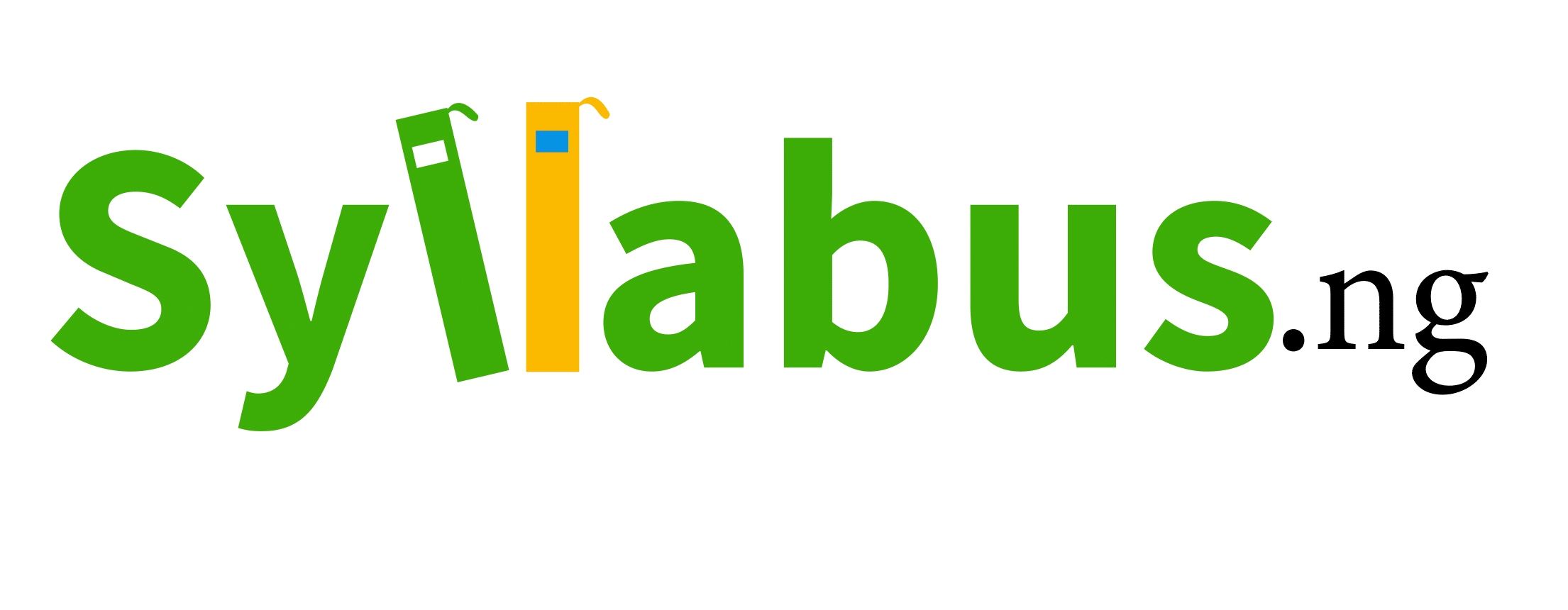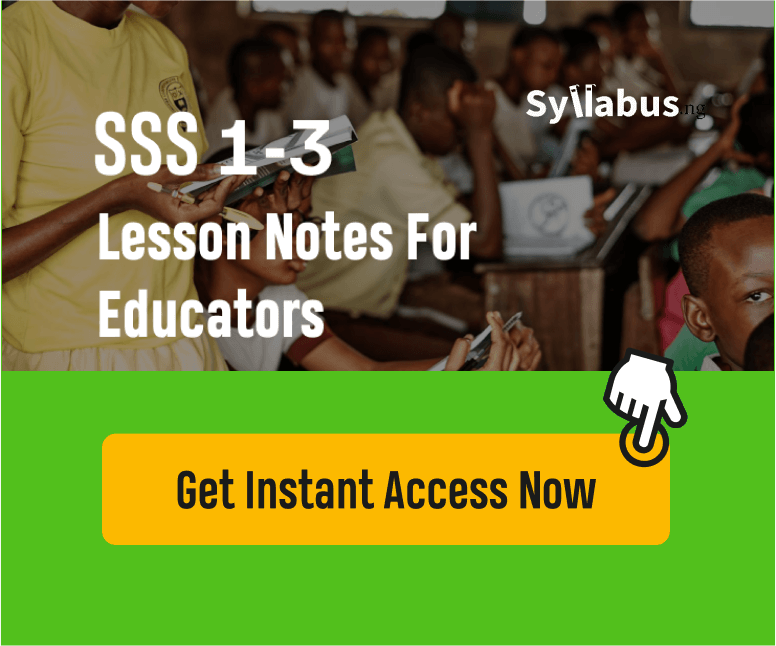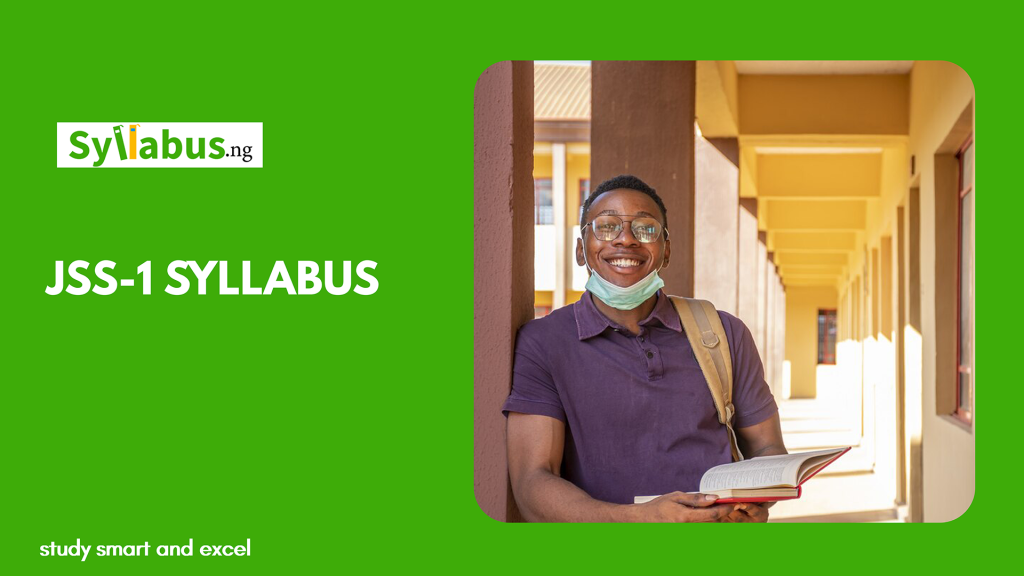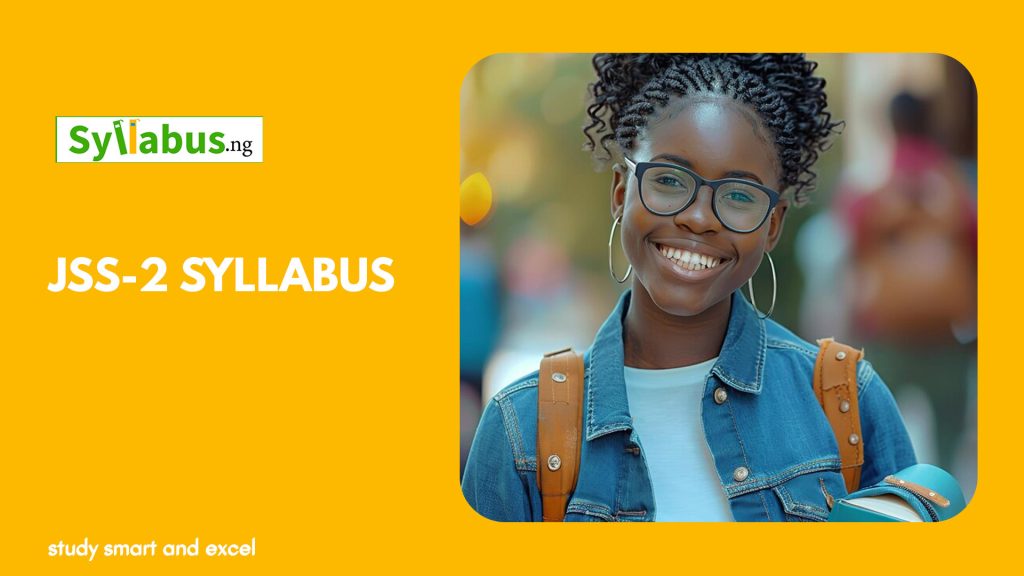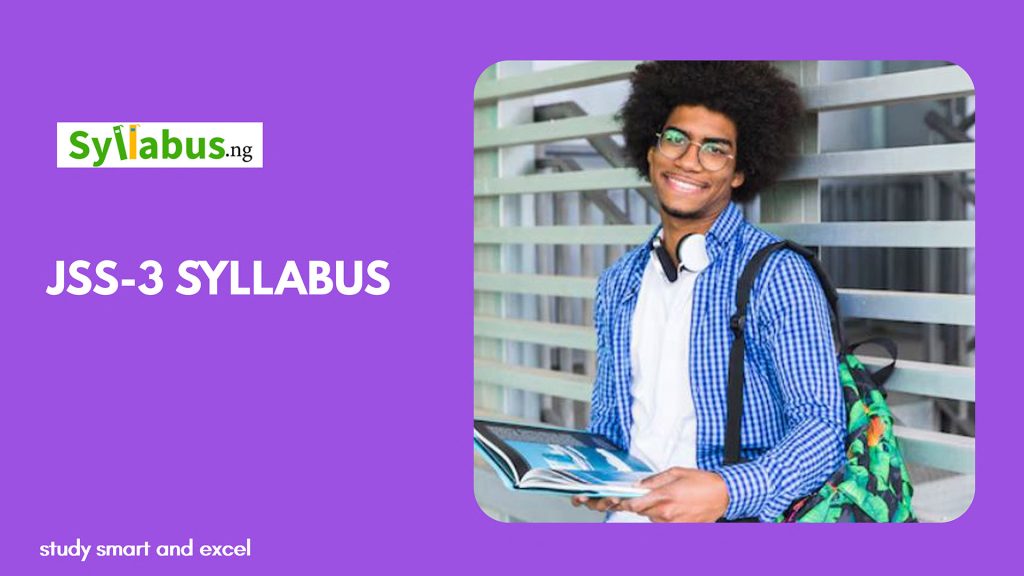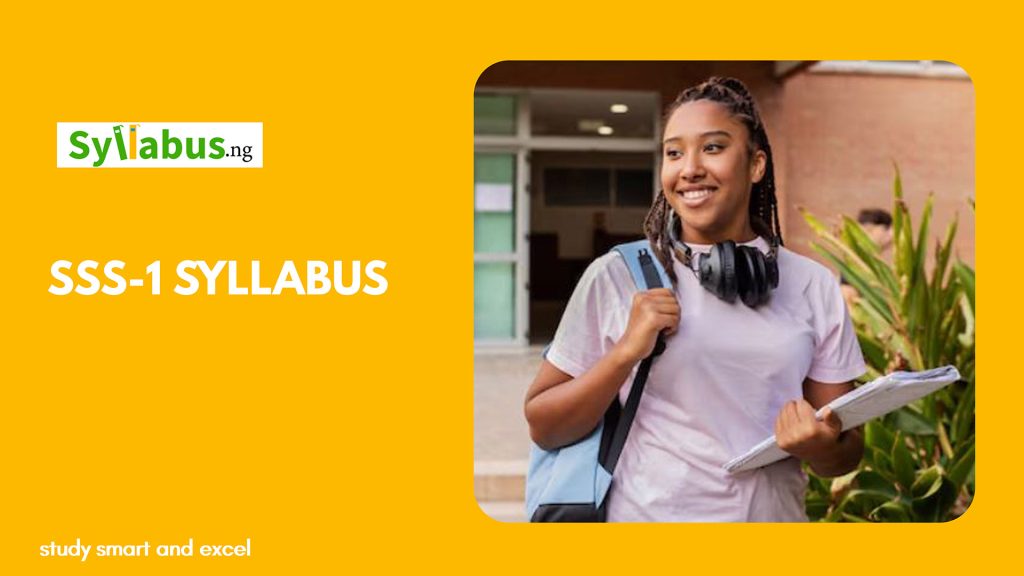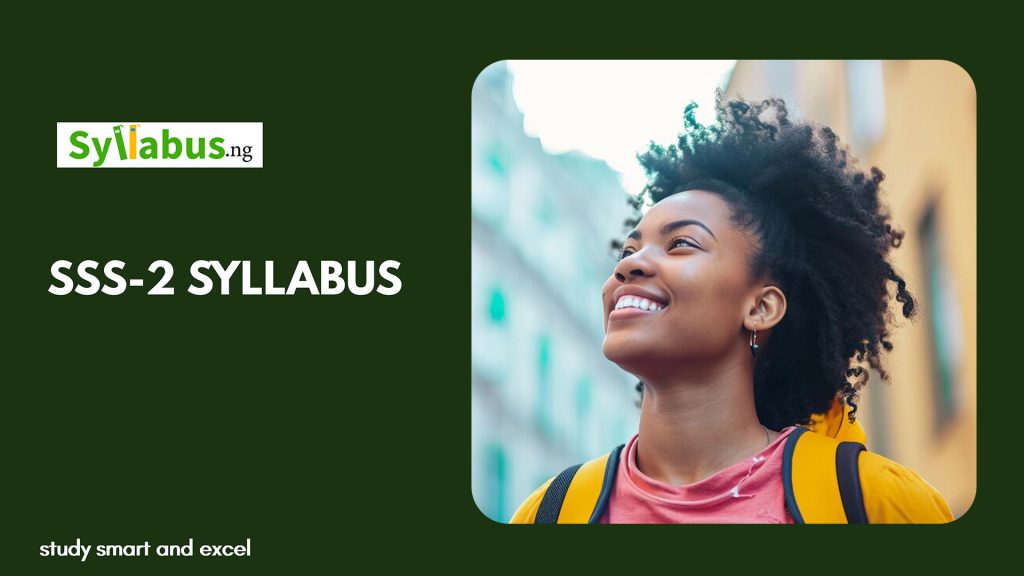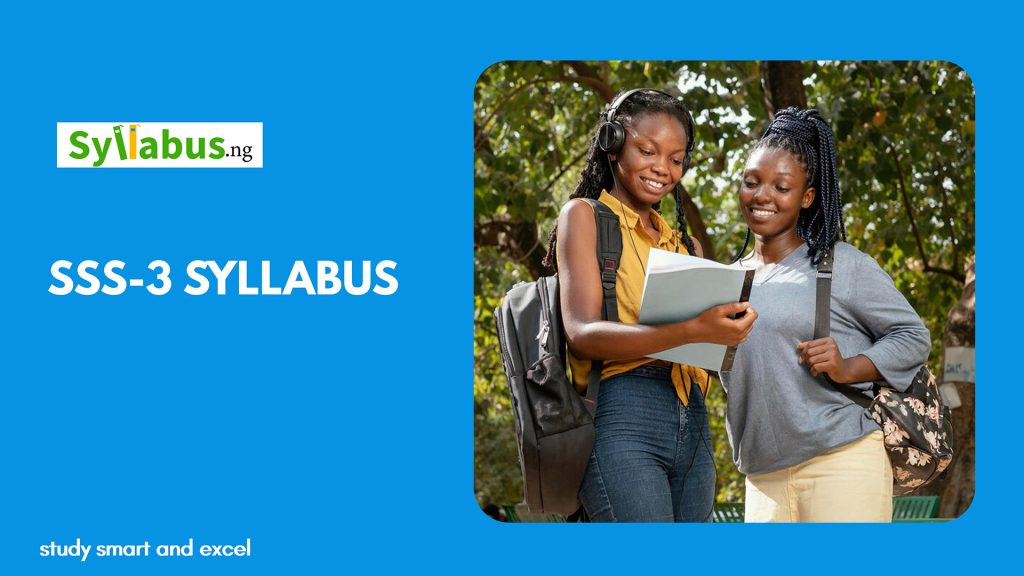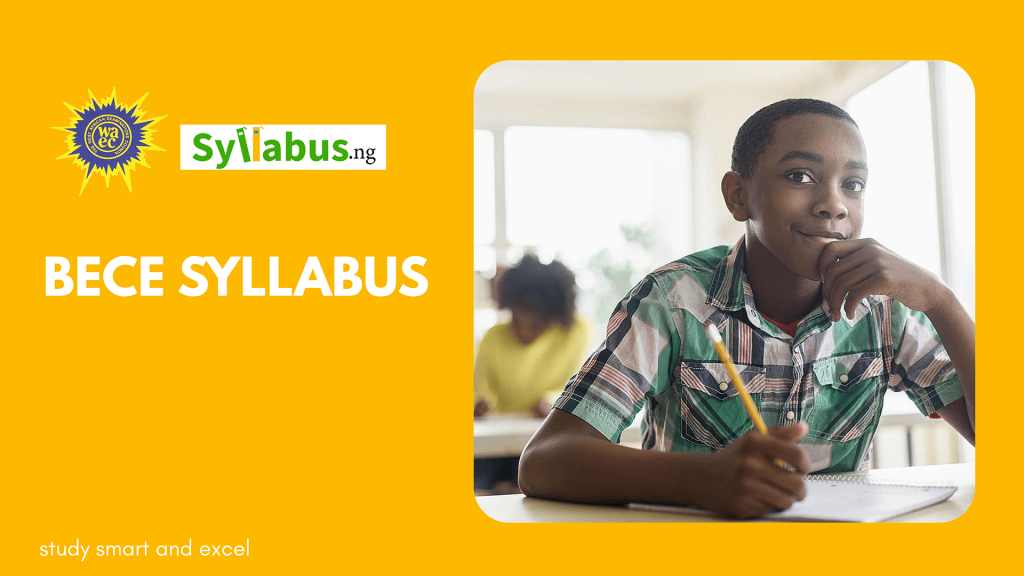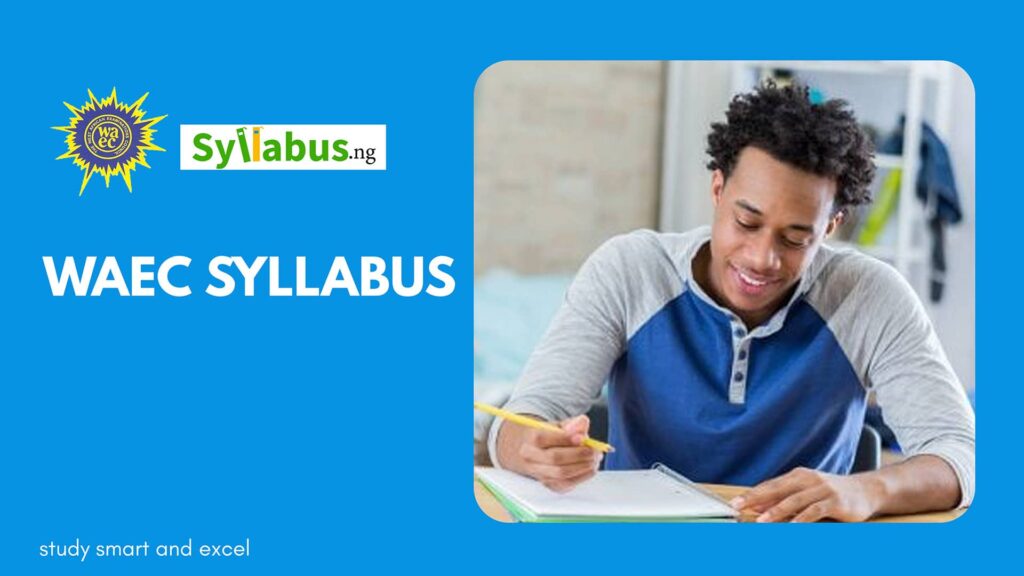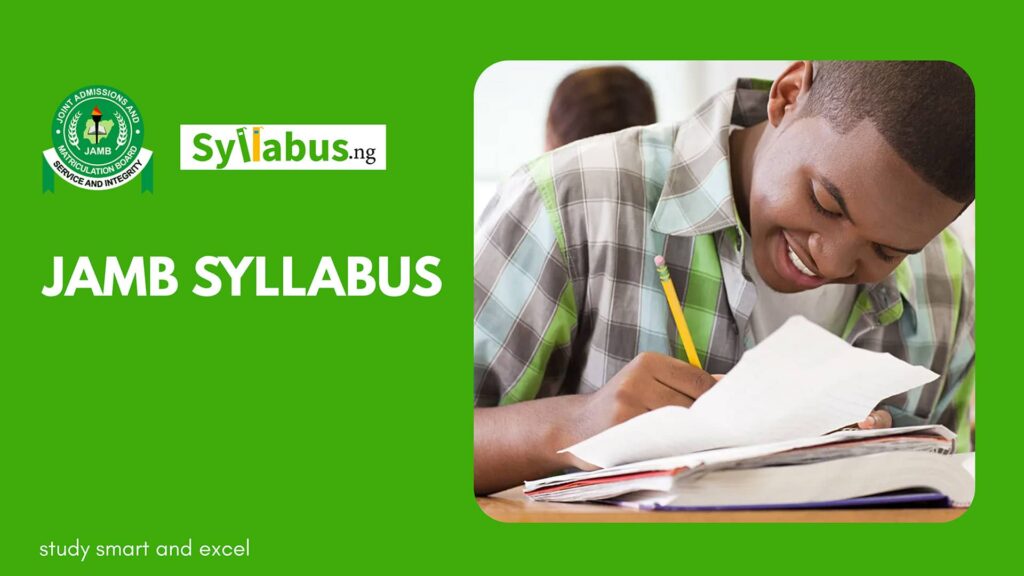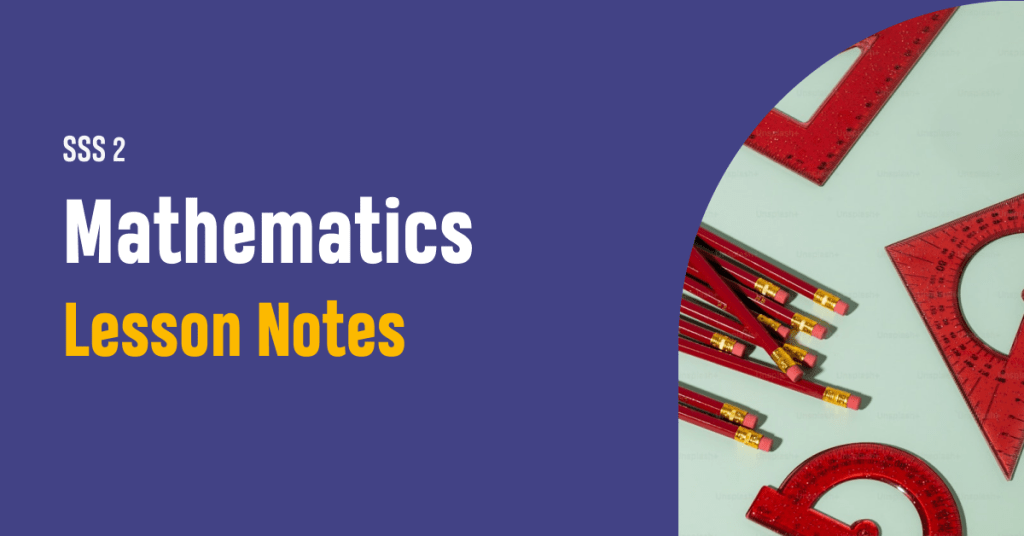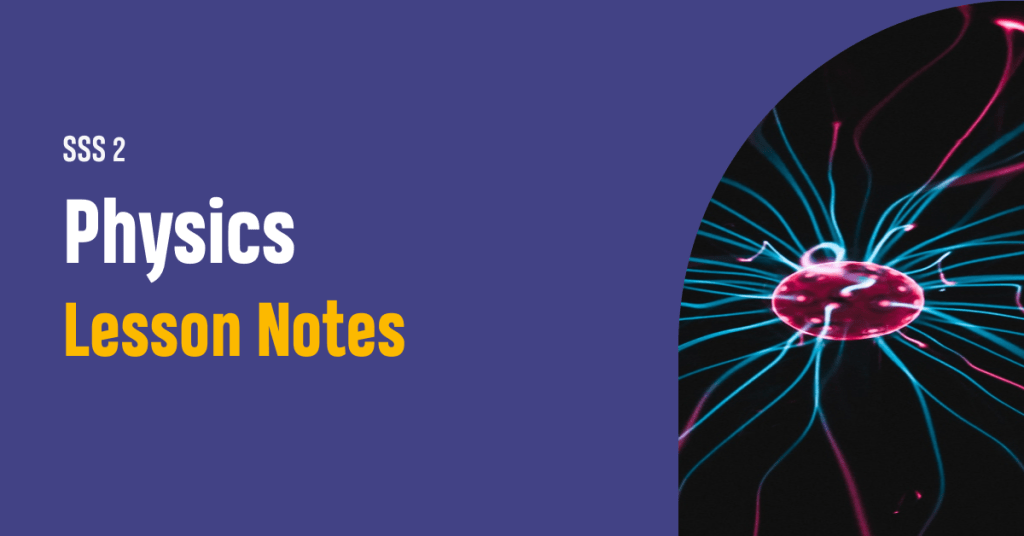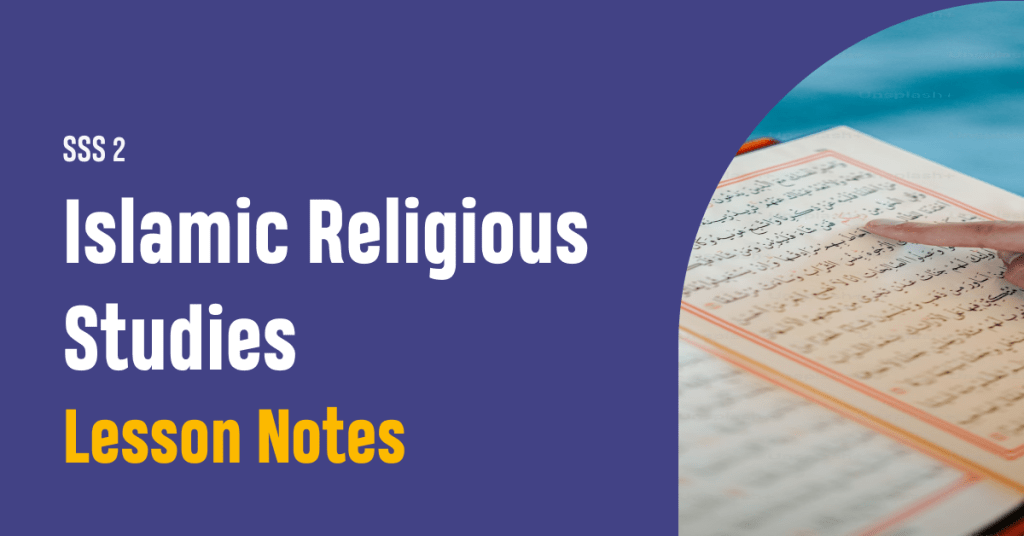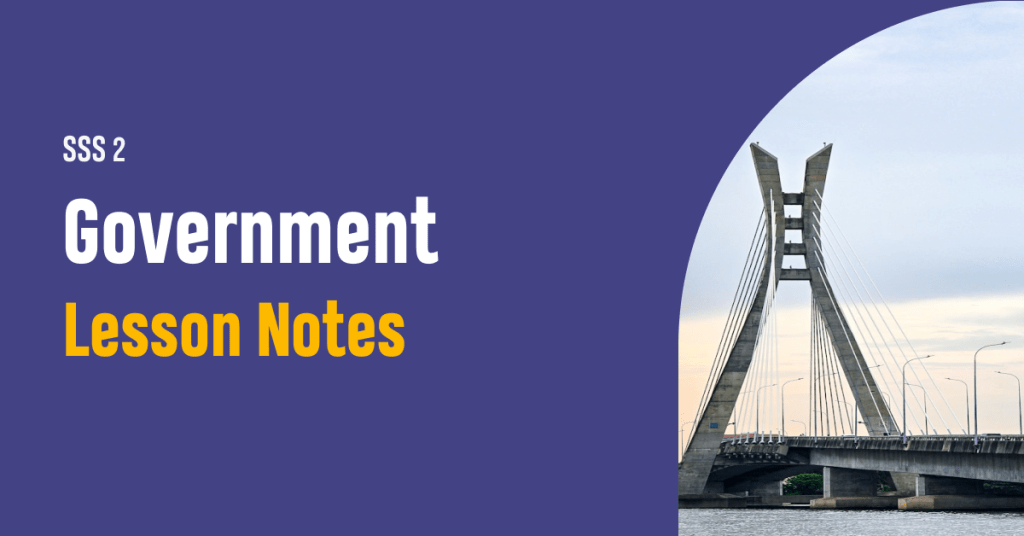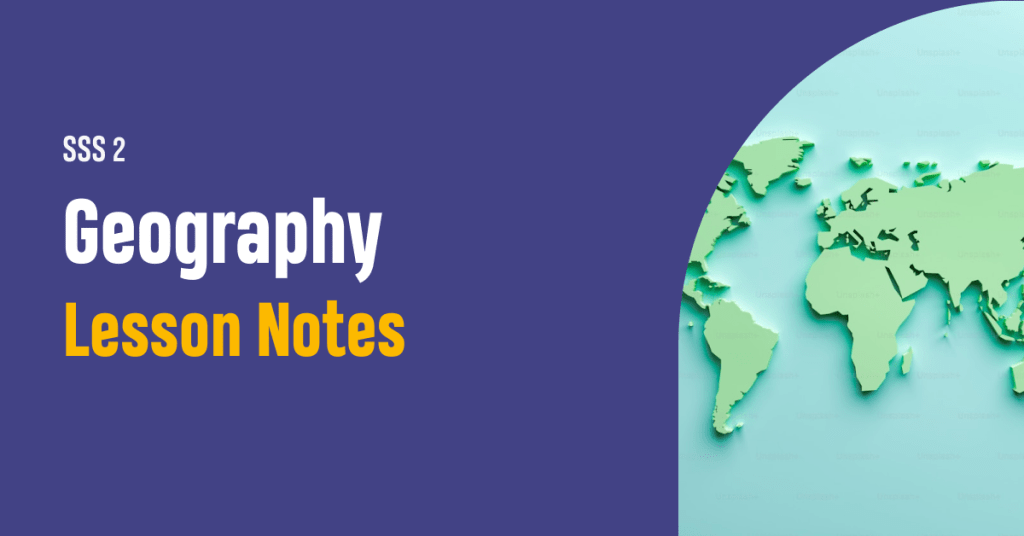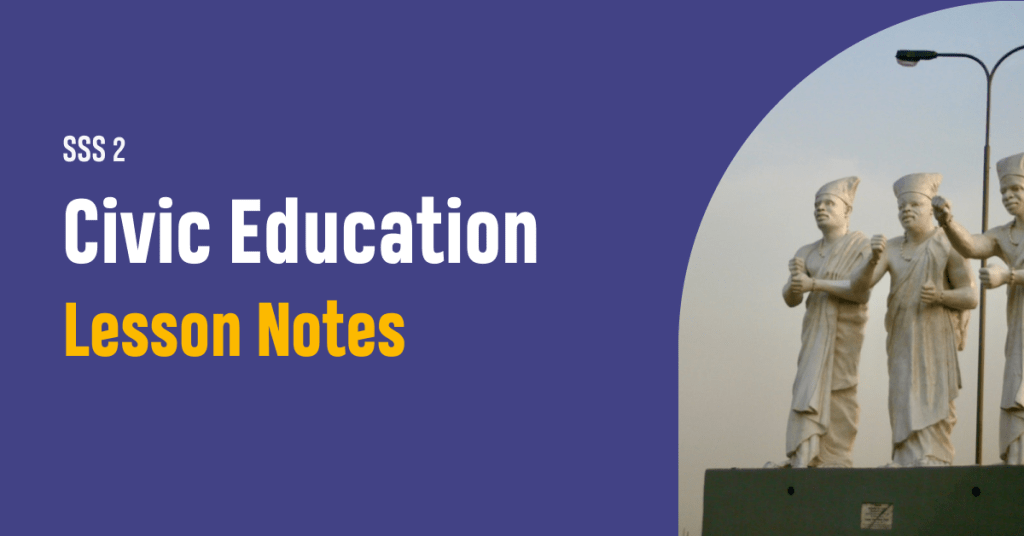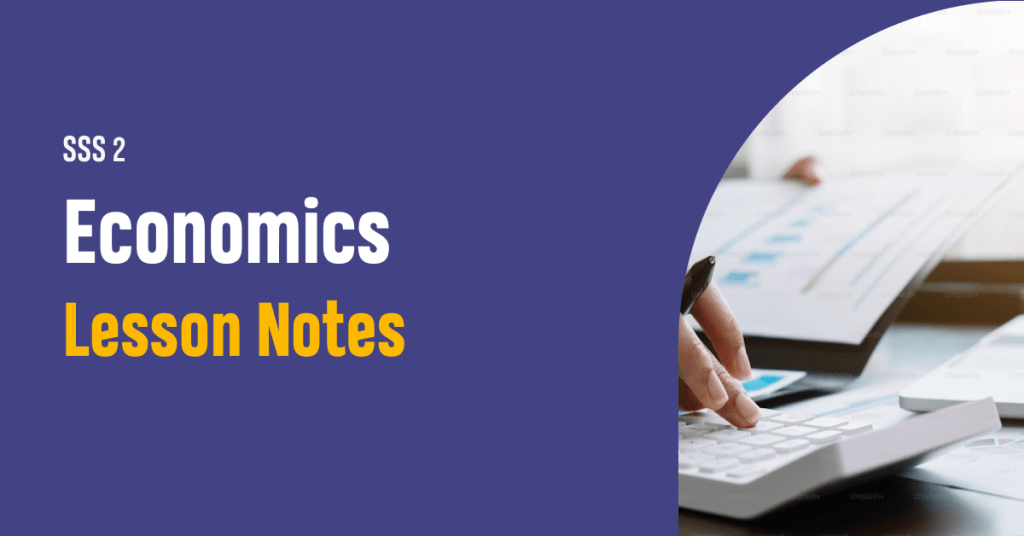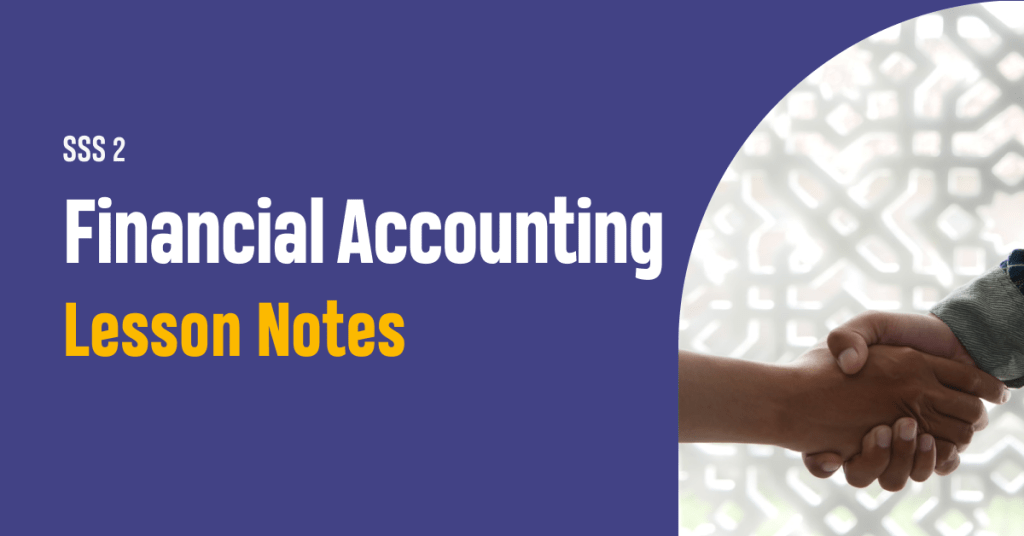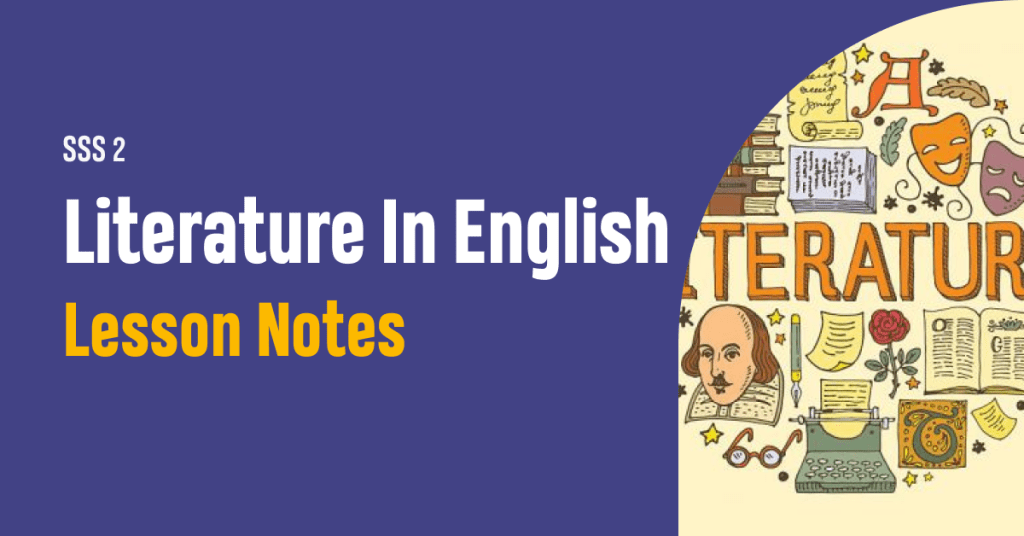SS2 Literature-in-English Scheme of Work
Download the Senior Secondary School 2 (SS2) Unified Scheme of Work for Literature-in-English to serve as a guide for educators

Home » SSS2 Scheme of Work » SSS2 Literature-in-English Scheme of Work
Home » SSS2 Scheme of Work » SSS2 Literature-in-English Scheme of WorkAbout SS2 Literature-in-English Scheme of Work
Literature in English involves studying written works in English, including novels, short stories, plays, poems, and essays. This subject analyzes and interprets these works to understand their themes, characters, settings, plots, and literary devices.
Studying Literature in English in SS2 using the Lagos State Unified Scheme of Work offers students a rich exploration of literary texts, fostering a deep appreciation for reading. In SSS2, the unified scheme of work covers various literary genres, such as prose, poetry, and drama. Students read classical and modern works, helping them understand how literature has evolved; this variety improves their grasp of literary forms and expands their views on cultural, social, and historical issues.
Achievement Standards
SSS2 First Term
At the end of SSS2 first term, students can;
- Read, discuss, and evaluate different viewpoints on the content, themes, and narrative techniques of these poems; “The Leader and the Led” by Niyi Osundare and “Raider of the Treasure Trove” by Lade Wosomu;
- Critically analyze the themes, contents, structures, and poetic devices of these poems; “The Song of the Women of My Land” by Oumar Farouk Sesay and “The Government Driver on his Retirement” by Onu Chibuike;
- Discuss and evaluate different viewpoints on the content analysis of “Grieved Lands” by Austino Neto;
- Highlight and discuss the main themes and poetic devices in these poems, “Journey of the Magi” by T.S Elliot and “Caged Bird” by Maya Angelou;
- Comment on the themes and content analysis of these poems; “Bat” by David Lawrence and “Do not Go into the Good Morrow” by Dylan Thomas.
SSS2 Second Term
At the end of SSS2 second term, students can;
- Narrate and analyze the author’s background, plot summary, setting, and style of either Ralph Ellison’s Invisible Man or Emilly Bronte’s Wuthering Height;
- Highlight at least three male and female characters and discuss their roles, significance, importance, and contributions to the development of the plot of Invisible Man or Wuthering Height;
- Justify the use of narrative techniques used by the authors in the prose texts;
- Comment on language, diction, and uses of figures of speech used by the authors.
SSS2 Third Term
At the end of SSS2 third term, students can;
- Read, analyze, and critically appreciate the storyline of Act 1; Scene 1 of Wilson’s Fences and Osborne’s Look Back in Anger;
- Discuss the major and their significance in either play;
- Write short notes on different characters, themes, and settings of the recommended drama texts;
- Compare and contrast major and minor characters in the play;
- Discuss their roles and contributions to the development of the plot;
- Discuss and evaluate different viewpoints on poetic devices and themes of Binsey Poplars by G. N. Hopkins.
Assessment Guide
Assessment methods for Literature in English in SSS2 include written exams, essays, oral presentations, and class discussions. These evaluations test students’ understanding of literary texts, their ability to analyze themes, characters, and literary techniques, and their skill in expressing ideas clearly and effectively.
NEW WAEC RECOMMENDED LITERATURE FOR 2026-2030

Download SSS2 Literature Scheme of Work

Know what’s expected of you as an educator
Download the Lagos State Unified Scheme of Work for Senior Secondary School Two (SSS2) Literature.
Get SSS2 Literature In English Lesson Notes
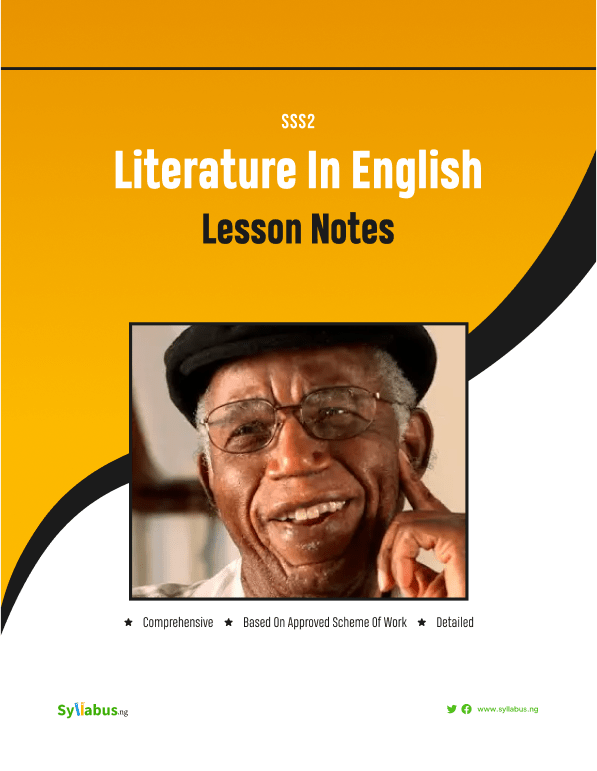
Never bother about writing lesson notes again. Get our well written SSS 2 Literature In English lesson notes for (First, Second & Third Term).
Its’s printable, in PDF Format, editable, and easy to use.
SS2 First Term Scheme of Work for Literature-in-English
| LAGOS STATE MINISTRY OF EDUCATION UNIFIED SCHEMES OF WORK FOR SENIOR SECONDARY SCHOOLS | ||
| Literature Scheme of Work for Senior Secondary Schools 2(SSS2) | ||
| CLASS | S.S.S.2 | |
| SUBJECT | Literature in English | |
| TERM | First Term | |
| WEEK | TOPICS | Learning Objectives |
| 1 | Genres of literature -Introduction to African Poems “Black Woman” Leopold Sedar Senghor -Themes and content analysis of Black Woman -Poetic device of Black Woman | By the end of the lesson, students should be able to: 1. identify and discuss the themes of the poem 2. identify the features of peotry in the poem |
| 2 | “The Leader and the Led”-Niyi Osundare -Themes and content analysis of the Leaders and the Led, -Peotic device of the Leaders and the Led. | 1. identify and discuss the main themes of the poem 2. state and explain the poetic device |
| 3 | Grieved Lands’ Agostinho Neto -Themes and Content Analysis of ‘Grieved Lands’ -Poetic Devices of ‘Grieved Lands’ | By the end of the lesson, students should be able to: 1. identify and discuss the main themes in the poem 2. state the poetic device in the poem |
| 4 | The song of the Women of my Land’-Oumar Farouk Sesay -Themes and Content Analysis of song of the Woman of my Land -Poetic Devices of ‘The Woman of my Land’ | By the end of the lesson, students should be able to: 1. identify and discuss the main themes in the poem 2. state the poetic device in the poem |
| 5 | Rader of the Treasure Trove’- Lade Wosomu Themes and Content Analysis of ‘Rader of the Treasure Trove’ -Poetic device of ‘Rader of the Treasure Trove’ | By the end of the lesson, students should be able to: 1. identify and discuss the main themes in the poem 2. state the poetic device in the poem |
| 6 | The Government Driver on his Retirement’-Oru Chibuike -Themes and Content Analysis of ‘The Government Driver on his Retirement’ Poetic device of ‘The Government Driver on his Retirement’ | By the end of the lesson, students should be able to: 1. identify and discuss the main themes in the poem 2. state the poetic device in the poem |
| 7 | TEST/OPEN DAY/TERM BREAK | |
| 8 | Introducton to Non-African Poems ‘Journey of the Magi’-T.S. Elliot -Themes and Content Analysis of ‘Journey of the Magi’ -Poetic Devices of ‘Journey of the Magi’ | By the end of the lesson, students should be able to: 1. identify and discuss the main themes in the poem 2. state the poetic device in the poem |
| 9 | Caged Bird’ Maya Angelou -Themes and Content Analysis of ‘Caged Bird’ -Poetic Device of ‘Caged Bird’ | By the end of the lesson, students should be able to: 1. identify and discuss the main themes in the poem 2. state the poetic device in the poem |
| 10 | Do not go Gentle into the Good Morrow’-Dylan Thomas -Themes and Content Analysis of ‘Do not go Gentle into the Good Morrow’ -Poetic Device of ‘Do not go Gentle into the Good Morrow’ | By the end of the lesson, students should be able to: 1. identify and discuss the main themes in the poem 2. state the poetic device in the poem |
| 11 | Bat’-David H. Lawrence -Themes and Content Analysis of ‘Bat’ -Poetic Devices of ‘Bat’ | By the end of the lesson, students should be able to: 1. identify and discuss the main themes in the poem 2. state the poetic device in the poem |
| 12 | REVISION | |
| 13 | EXAMINATION | |
SS2 Second Term Scheme of Work for Literature-in-English
| CLASS | S.S.S.2 | |
| SUBJECT | Literature in English | |
| TERM | Second Term | |
| WEEK | TOPICS | Learning Objectives |
| 1 | Welcome Test and Revision of Last Term’s work Literary Terms/Figure of Speech (continuation) | By the end of the lesson, students should be able to: 1. recall the previous term’s work 2. mention and discuss new literary terms and figure of speech |
| 2 | Introducton to Non-African prose Ralph Elison-‘Invisible Man’ Emily Bronte’Withering Height’ -Plot structure/analysis of either prose listed above -Setting of either prose listed above | By the end of the lesson, students should be able to 1. narrate the story of the either text 2. identify the setting(Physical, social and time) of the either prose. |
| 3 | Meticulous study and analysis of Chapter 1-5 of ‘invisible man’ or Chapter 1-6 of Withering Height’ | By the end of the lesson, students should be able to 1. discuss the author’s introduction and the prologue 2. examine narrator’s grandfather’s advice while he was about to die OR the importance of Lockwood’s second visit to ‘Withering Height’ etc |
| 4 | Meticulous study and analysis of Chapter 6-10 of ‘invisible man’ or Chapter 7-14 of Withering Height’ | 1. relate the expulsion of the narrator to Reverend Homer A Barbee’s speech to the Founder’s Day celebration OR 2. describe the encounter of Catherine and Heathclif with the Linfosic. |
| 5 | Meticulous study and analysis of Chapter 11-15 of ‘invisible man’ or Chapter 15-21 of Wuthering Height’ | By the end of the lesson, students should be able to 1. examine the significance of the narrator’s encounter with Mary Rambo etc OR 2.examine the significance of Issabella’s relationship with Heathcliff etc |
| 6 | Meticulous study and analysis of Chapter 16-20 of ‘invisible man’ or Chapter 22-28 of Wuthering Height’ | By the end of the lesson, students should be able to 1. discuss the narrators first Brotherhood speech and its significance etc 2. explain how Nely Dean’s visit to Wuthering Heights facilitate reconnection of Heathdlff to Catherine etc. |
| 7 | TEST/OPEN DAY/ MID TERM BREAK | |
| 8 | Meticulous study and analysis of Chapter 21-25 of ‘invisible man’ or Chapter 29-34 of Wuthering Height’ | By the end of the lesson, students should be able to 1. compare and contrast the narrators encounter with Mary and that of Sybile etc OR 2. narrate the incidents that lead Heathcliff to mary Lintton etc |
| 9 | Characters and Charterisation, roles and significance/importance to the development of the plot of the text ‘Invisible Man’ or Wuthering Height NOTE: Roles played by each character in either novel must be emphasised. | By the end of the lesson, students should be able to: 1.examine the character and roles of the narrator etc OR 2. compare and contrast the characters of Heathcliff and Lockwood |
| 10-11 | Themes of either prose listed above’Invisible Man’ -Racial inequality and Prejudice -The futility of life’s struggles -The endless search for identity -Disunity among Blacks Wuthering Height -Love, Deceit and Betrayal -Revenge and Retribution -Benevolence -Religious -Hypocrisy etc Styles, language(diction) and -Narrative Techniques of either prose listed above ‘Invisible Man’ First Person Narrative ‘Wuthering Height’ Multiple Narrative, Narrator, Symbolism | By the end of the lesson, students should be able to 1. discuss the themes of Invisible Man OR 2. discuss the themes of Wuthering Height 3. examine the narrative techniques applied in either prose |
| 12 | REVISION | |
| 13 | EXAMINATION | |
SS2 Third Term Scheme of Work for Literature-in-English
| CLASS | S.S.S.2 | |
| SUBJECT | Literature in English | |
| TERM | Third Term | |
| WEEK | TOPICS | Learning Objectives |
| 1 | Welcome Test Introduction to Non-African Drama -August Wilson: Fences -John Osborne: Look Back in Anger -Authorial and Textual background of either play -Setting of either play listed above | By the end of the lesson, students should be able to: 1. describe the author’s background and relate it to the play 2. trace the sequence of the of the major event in the play 3. discuss the setting of the play 4. narrate the story in either play |
| 2 | Comprehensive treatment of Act I; Scene one of either play | By the end of the lesson, students should be able to 1. identify the main characters in either play 2. discuss the major events and their significance in either play |
| 3 | Comprehensive treatment Act I Scene two of either play | By the end of the lesson students Should be able to: 1. describe the major events and their significance in either play, describe the main characters in either play. |
| 4 | Comprehensive treatment of Act II; scene one of either play | By the end of the lesson, students should be able to: 1. discuss the major event and their significance in either play. |
| 5 | Comprehensive treatment of Act II; scene two of either play | 1. explain the major events and their significance in either play; 2. relate all the events together |
| 6 | Character and Characterization in either play. NOTE Roles played by each character in either play MUST BE EMPHASISED | By the end of the lesson, students should be able to 1. identify the major and minor characters ; 2. identify and describe the roles of each character; 3. identify and discuss the importance of each character |
| 7 | TEST/OPEN DAY/MID TERM BREAK | |
| 8 | Themes of either play listed above | By the end of the lesson, students should be able to: 1. state and discuss the main themes in the either play. |
| 9 | style: Language and Dramatic techniques of either play | By the end of the lesson, students should be able to: 1. list and describe the unique language elements used either play. |
| 10 | Poplar Binsey’-G.N Hopkins -Theme and Content Analysis of the poem -Poetic device of the poem | By the end of the lesson, students should be able to: 1. identify and discuss the main themes in the poem 2. state the poetic device in the poem |
| 11 | The Good Morrow’ -John Donne -Theme and Content Analysis of the poem -Poetic device of the poem | By the end of the lesson, students should be able to: 1. identify and discuss the main themes in the poem 2. state the poetic device in the poem |
| 12 | REVISION | |
| 13 | EXAMINATION | |
Get SSS2 Literature In English Lesson Notes

Never bother about writing lesson notes again. Get our well written SSS 2 Literature In English lesson notes for (First, Second & Third Term).
Its’s printable, in PDF Format, editable, and easy to use.
Recommended Literature-in-English Textbooks for Senior Secondary School 2
The recommended textbooks for Literature in English in SSS2 include;
African poetry
- Black Woman by Leopold Sedar Senghor
- The Leader and the Led by Niyi Osundare
- Grieved Lands by Agostinho Neto
- The Song of the Women of My Land by Oumar Farouk Sesay
- Raider of the Treasure Trove by Lade Wosumu
- The Government Driver on his Retirement by Onu Chibuike.
Non-African Poetry
- Journey of the Magi by T.S Elliot
- Caged Birds by Maya Angelou
- Do not Go Gentle into the Good Morrow by Dylan Thomas
- Bat by David H. Lawrence
Non-African Prose
- Invisible Love by Ralph Elison
- Withering Height by Emily Bronte
Non-African Drama
- Fences by August Wilson
- Look Back in Anger by John Osborne
Non-African Poetry
- Binsley Poplars by G.N Hopkins
- The Good Morrow by John Donne.
SSS2 Scheme of Work for All Subjects
Trade Subjects
Download SSS2 Literature Scheme of Work

Know what’s expected of you as an educator
Download the Lagos State Unified Scheme of Work for Senior Secondary School Two (SSS2) Literature.
